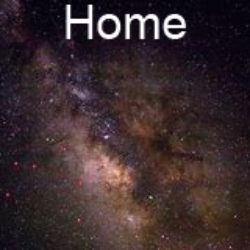There are of four digital cameras used on the mount.

Two main imaging cameras are used for deep space imaging;
- An Orion Starshoot Pro, this has a 6Mp sensor. The pixel size is 7.8um x 7.8um and the sensor chip is 25.1mm x 17.74 mm. The resolution on the LX200 is 0.64 arc/secs per pixel. Chip temperature is cooled to ambient -20degrees C. All the camera settings are remote controlled from a laptop computer.
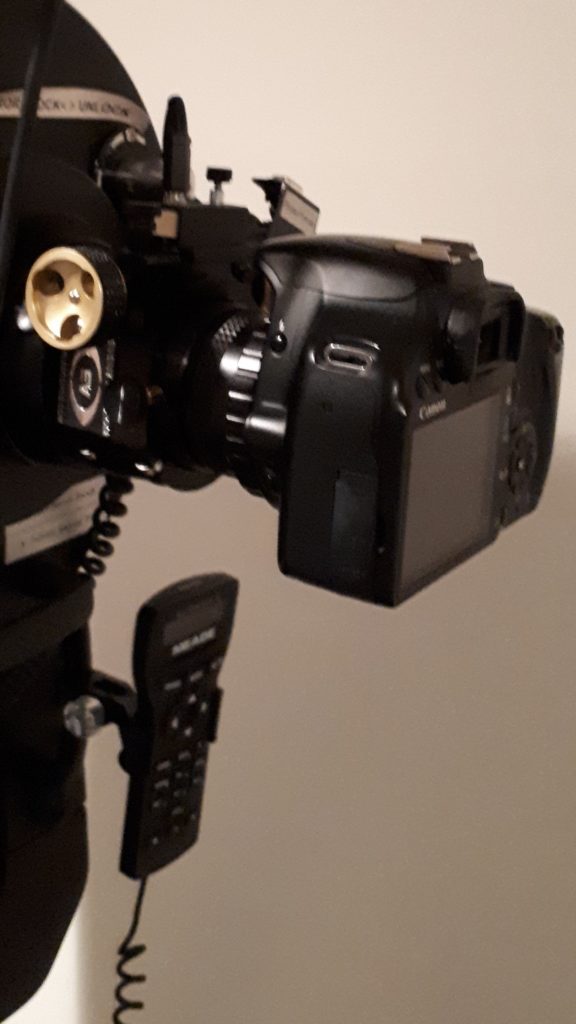
2. A Canon EOS 450D, here its show mounted at the prime focus of the Meade LX200. The sensor is similar in size to the Starshoot Pro at 22.2mm x 14.8mm but has more than twice the number of pixels 12.5Mp. All the camera settings are remote controlled from a laptop computer.
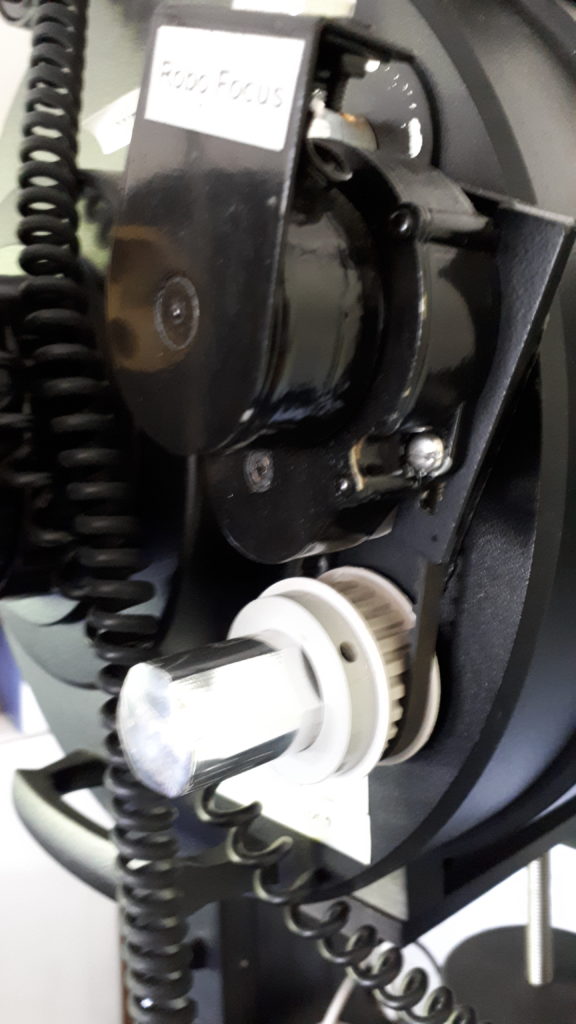
To place either of the two main imaging camera sensor chips at the prime focus, the primary mirror of the LX200 can either be adjusted manually or by using the Robofocus digitally controlled focuser. This is only used for course adjustment as I prefer to lock the mirror.
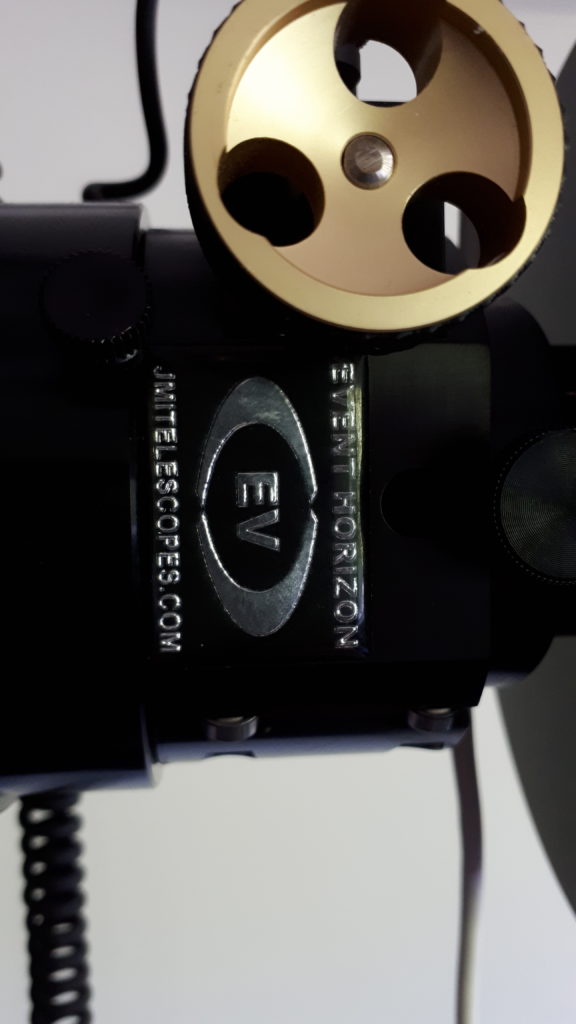
To achieve very accurate focus, between the LX200 telescope and either of the main imaging cameras is an Event Horizon electronic focuser this allows an extremely fine focus adjustment essential when imaging.
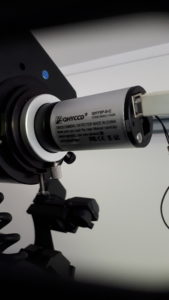
- A secondary imaging camera used for Lunar and planetary observations is a QHY SP-11-C The pixel size is 2.2um x 2.2um and the sensor size is 5.7mm x 4.28mm. Here it is shown on the EON72. The resolution when mounted on the LX200 is 0.18 arc/secs per pixel. This camera can also function as a guide camera.

The final camera is a dedicated guide camera, It’s an Orion Starshoot Autoguider. The pixel size is 5.2um x 5.2 um and the sensor size is 12.5mm x 12.5mm.
The guide camera is a monochrome camera and is shown here attached at the primary focus of the guide scope.
